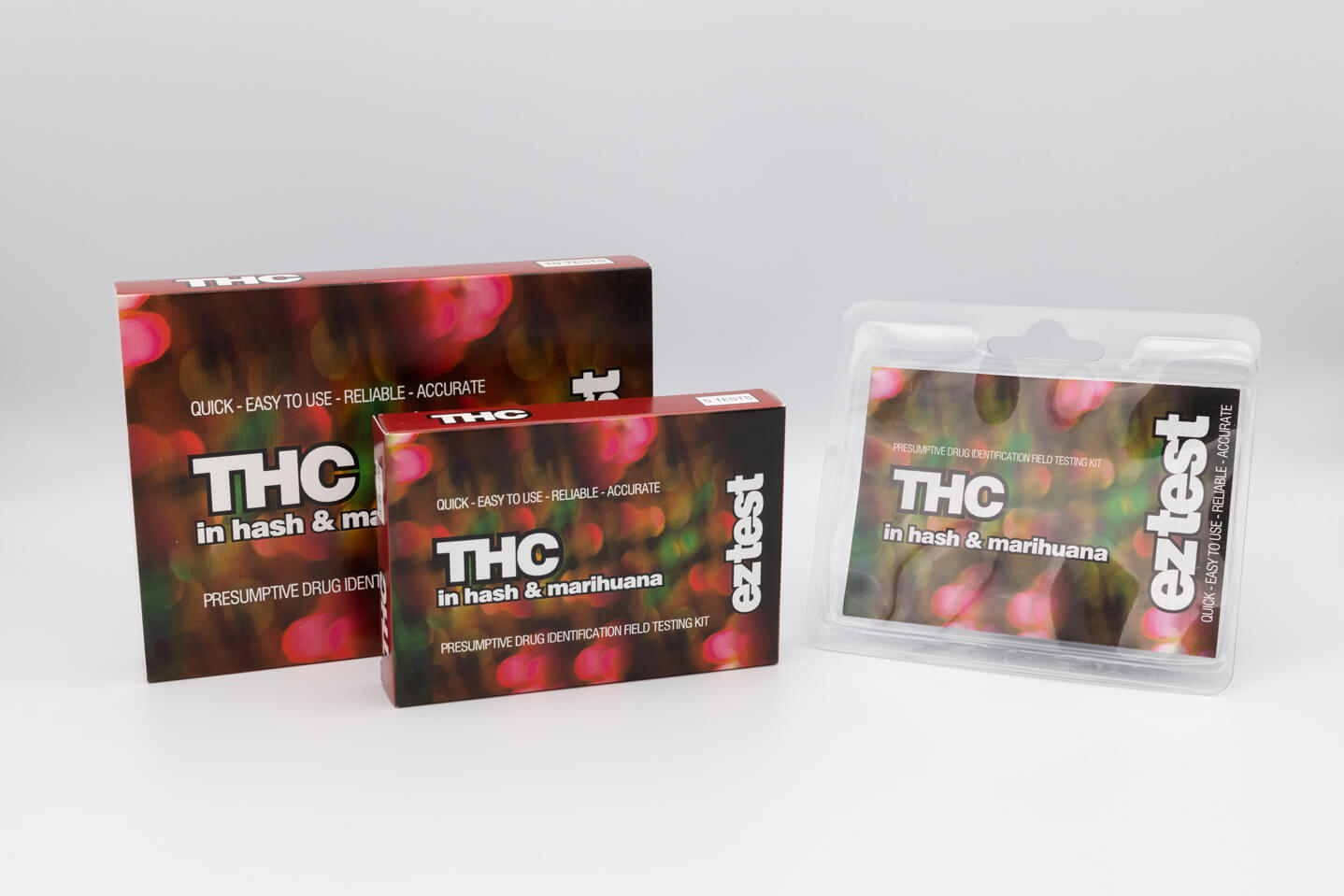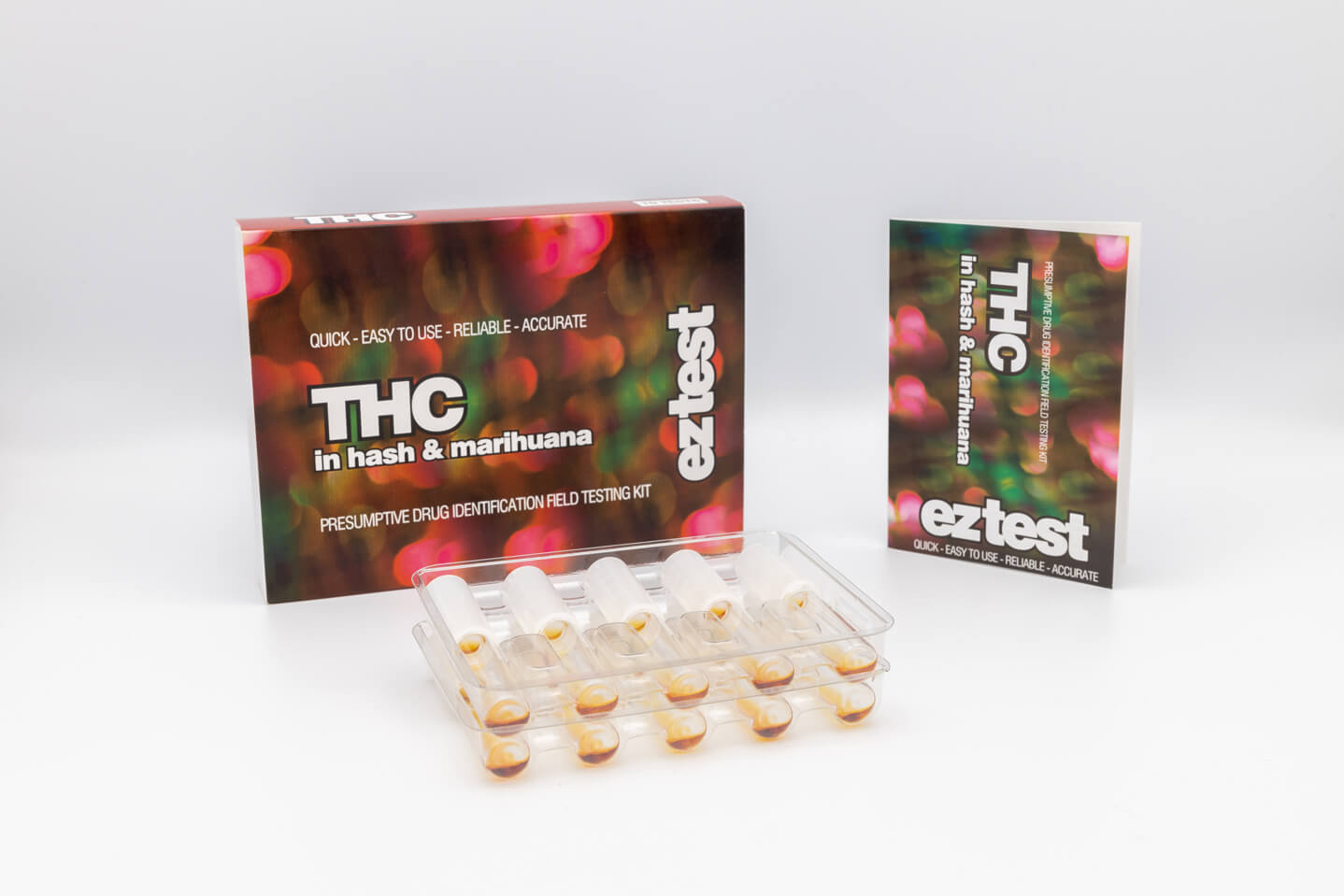EZ Test Kits
THC-Drogentest-Kit
THC-Drogentest-Kit
Verfügbarkeit für Abholungen konnte nicht geladen werden
- Sicheres Einkaufen
- Diskreter Versand
- Sichere Zahlungen
 Detects THC: Identifies THC in cannabis products, including raw flower, hashish, edibles and cannabis extracts (such as wax and shatter).
Detects THC: Identifies THC in cannabis products, including raw flower, hashish, edibles and cannabis extracts (such as wax and shatter).
 Simple and Quick: Get results in a few minutes, with a clear colour change indicatingthe presence of specific cannabinoids.
Simple and Quick: Get results in a few minutes, with a clear colour change indicatingthe presence of specific cannabinoids.
 Testing at Home: EZ Test Kits enable you to test substances in the safety and comfort ofyour own home.
Testing at Home: EZ Test Kits enable you to test substances in the safety and comfort ofyour own home.
Das THC-Drogentest-Kit ist konzipiert zum Testen des Vorhandenseins von THC (Tetrahydrocannabinol) in einer Probe. Ob beim Testen von Cannabisblüten , Haschisch oder andere Esswaren, Extrakte oder Cannabisprodukte , dieses Kit bietet eine einfache, effektive Möglichkeit , THC nachzuweisen. Das THC-Drogen Die Farbänderung des Tests entspricht dem beiliegenden Informationsblatt und der Farbtabelle und ermöglicht so eine einfache Methode zur Interpretation der Ergebnisse.
Wie es funktioniert
Wie es funktioniert
The THC Drug Testing Kit uses a chemical reagent absorbed in silica gel, which is held inside a glass ampoule. When a sample is added, the reagent reacts with the synthetic cannabinoids, causing a colour change. This colour is then compared to the provided chart, giving a clear indication of whether or not the sample contains THC.
The THC Drug Testing Kit has been specially designed to not react with the organic material in cannabis flower, allowing the reaction with THC to be clearly visible and not obscured.
If you are testing cannabis edibles please bear in mind that the colour of the edible may obscure or confuse the results of the test.
Unfortunately we are not able to give details of the reagent used or the precise nature of the chemistry involved for this test
Reagent Testing
Reagent Testing
What is Reagent Testing?
Reagents are chemicals (usually acids or bases) which react in a known way to the suspected contents of a sample. All reagents sold by EZ Tests are known to change colour according to the substance that they are testing for.
Reagent testing is the process of adding an unknown material to a chemical reagent to observe the reaction that follows. It is a form of forensic chemistry which aims to rule in and out certain chemicals or groups of chemicals with various reagents until the contents is known. Reagent testing does not guarantee the presence of any particular drug or the absence of any others.
Why is Reagent Testing Important?
Illicit drugs are made, sold and (often) consumed with no quality testing or indication of what they really contain. Unfortunately, this can result in bad experiences, anxiety and serious harm. Reagent tests offer a quick and easy way to get some idea of what you may be taking.
They are not perfect, and they do not replace professional laboratory testing services, but they can be vital and may save a life.
What are the Limitations of Reagent Testing?
Reagent testing cannot guarantee that a sample contains a certain drug, and it cannot guarantee that there is no other drug present. Despite testing, it is possible that a different chemical reacted similarly to the expected reaction, causing a false positive. It is also possible that there is a drug in your sample which does not react to the reagent in question, or the second reaction is obscured by the drug you expect to find, and therefore is not found in the tests. It is always a good idea to use three or more different tests on any sample, to reduce the risk of this happening.
If you are using a purity test then it is vital that you are testing a known quantity of the drug (and that this amount is the same as the amount specified in the instructions) or else the degree of colour change will not correspond to the purity of the sample.
Storage
Storage
The ampoule in which the reagents are supplied is made out of clear glass to allow reliable identification of colour changes. To ensure that the shelf life of your reagents is as long as possible, please store them in a cool, dark place such as your fridge or cool cupboard.
Safe Disposal
Safe Disposal
After testing, please ensure that the ampoule and any leftover sample are disposed of safely to prevent contamination or harm. Proper disposal helps protect yourself and others from potential exposure to harmful substances.
If the reagent comes into contact with your skin, you should wash the affected area with soap and lukewarm water for 10-15 minutes. If the reagent comes into contact with your eyes you should adhere to the same process with lukewarm water only.
Aktie
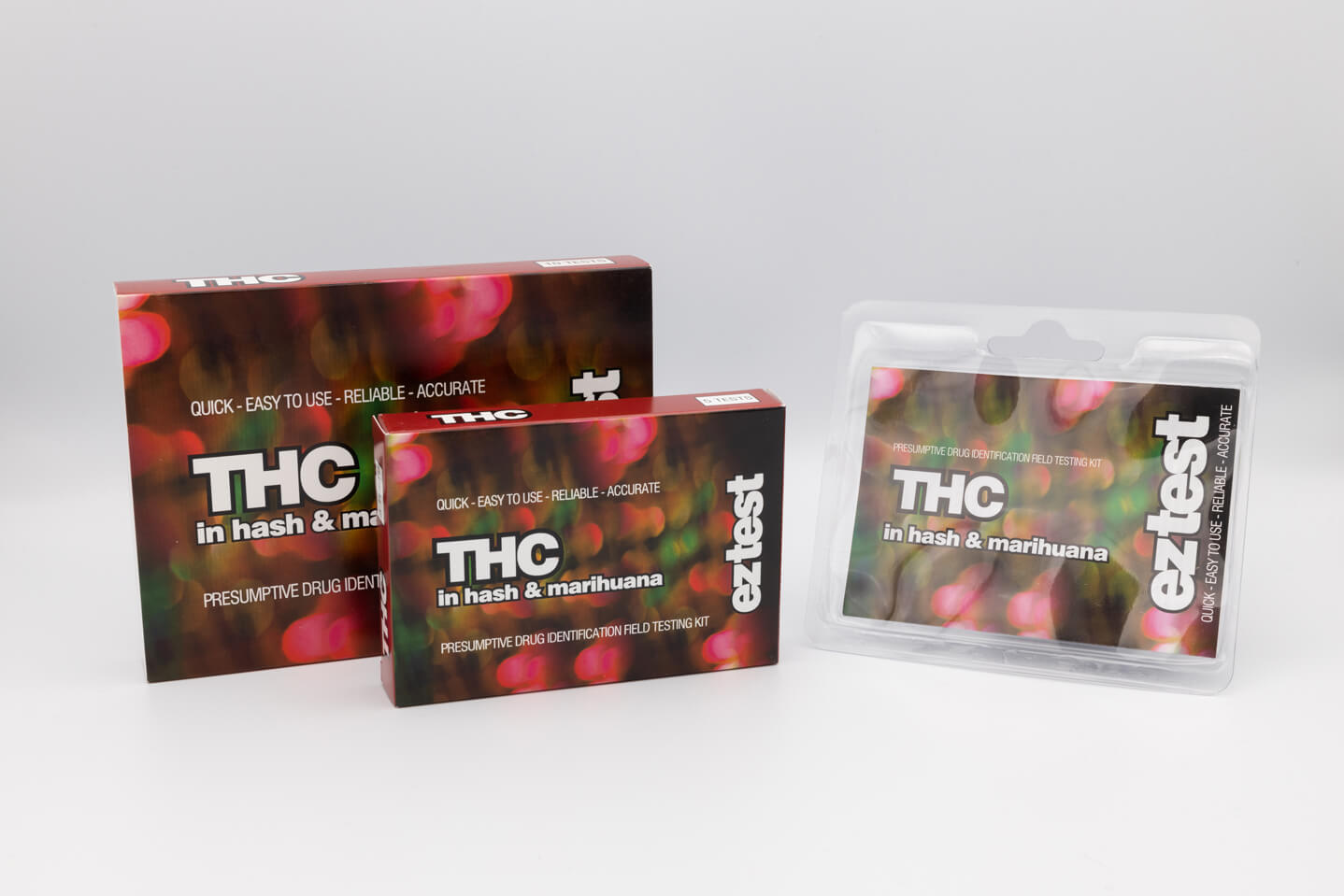
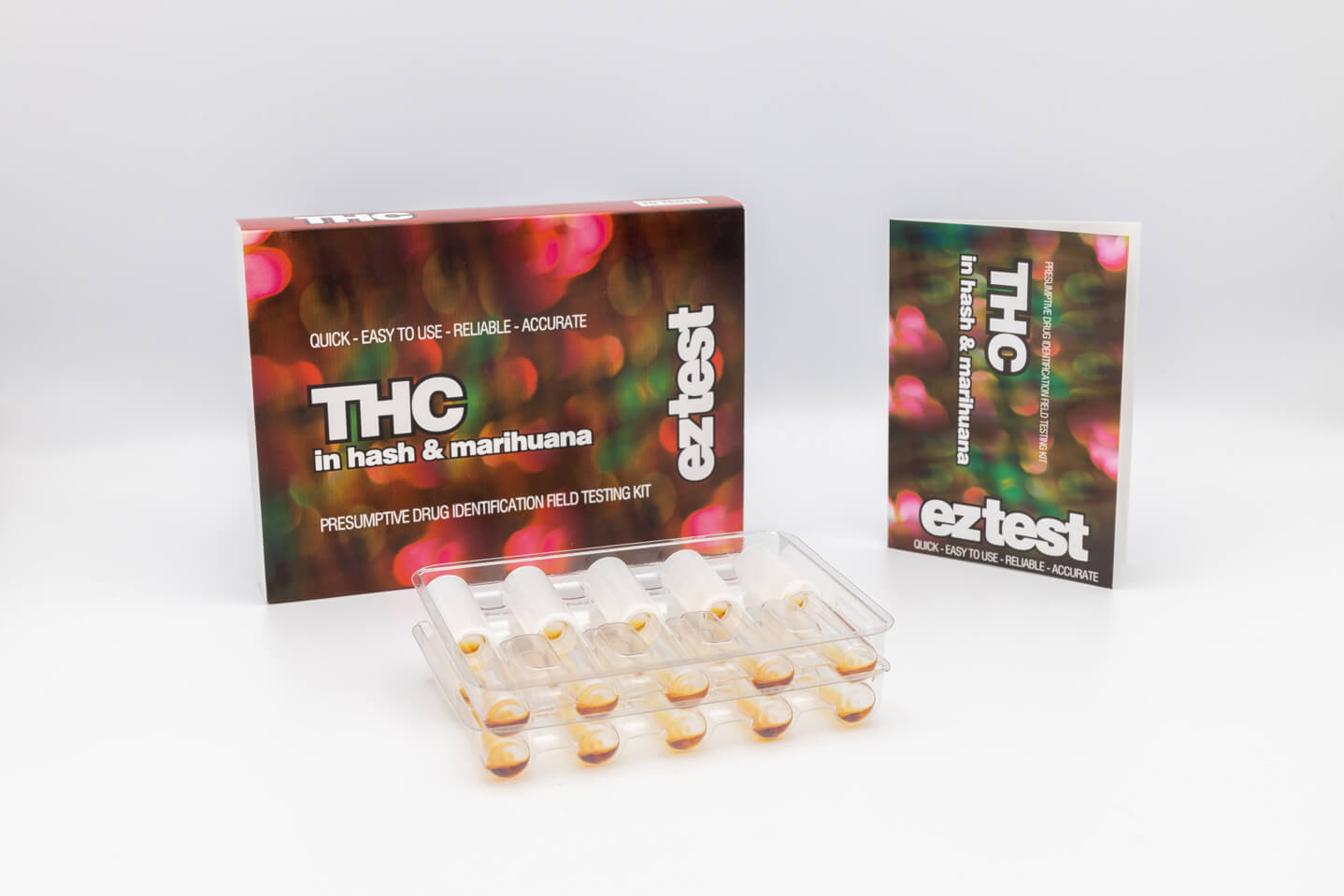
-
WICHTIGER HINWEIS!
- EZ-Testkits liefern keine Informationen darüber, wie viel einer Substanz nachgewiesen wurde und was dementsprechend eine sichere Dosis darstellt.
- Ein positives Ergebnis für das Vorhandensein einer Droge bedeutet nicht, dass keine anderen (potenziell gefährlicheren) Substanzen vorhanden sind.
- Es besteht die Möglichkeit technischer oder verfahrenstechnischer Fehler.
- Andere Faktoren und Substanzen können zu falschen Ergebnissen führen (entweder falsch negativ oder falsch positiv).
- Ein negatives Ergebnis schließt das Vorhandensein von Drogen nicht aus. Es können geringere Mengen vorhanden sein als die getestete.
- Wenn Sie sich über Ihre Ergebnisse nicht im Klaren sind und eine vollständige Analyse der Substanz wünschen, die Sie haben, lesen Sie bitte unseren Artikel zu Labortests .
- Ein positives oder negatives Testergebnis ist KEIN Hinweis darauf, dass die untersuchte Substanz unbedenklich ist. Kein Medikament ist völlig unbedenklich, auch wenn es rein ist.
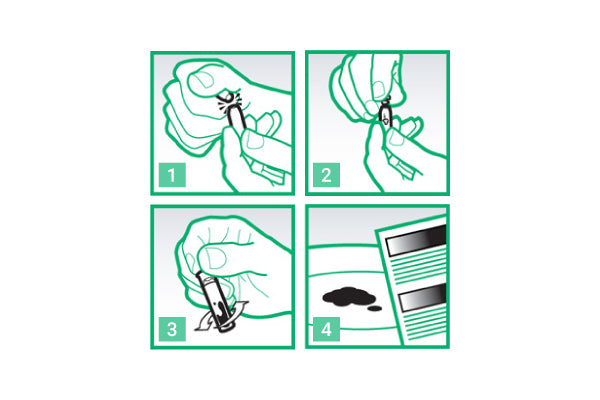
Anweisungen
- Öffnen der Ampulle : Öffnen Sie vorsichtig die im Set enthaltene Glasampulle.
- Probe einfüllen : Geben Sie eine kleine Menge der zu testenden Substanz in die Ampulle.
- Mischen Sie die Chemikalien : Setzen Sie den Plastikdeckel auf die Ampulle und schütteln Sie sie gut, um sicherzustellen, dass die Probe vollständig mit dem Reagenz reagiert.
- Vergleichen Sie die Farbänderung : Beobachten Sie die Farbänderung in der Lösung und vergleichen Sie sie mit der bereitgestellten Tabelle, um festzustellen, welche Chemikalien vorhanden sein könnten.

Interpretation der Ergebnisse
- Forschungschemikalien (z. B. THC): Es entwickelt sich eine deutliche Farbe, die den auf der Farbkarte angegebenen spezifischen Substanzen entspricht.
- Keine signifikante Farbänderung: Wenn die Reaktion keine oder nur eine geringe Farbänderung bewirkt, enthält die Probe wahrscheinlich keine nachweisbaren Mengen der betreffenden Chemikalien.
Useful Links
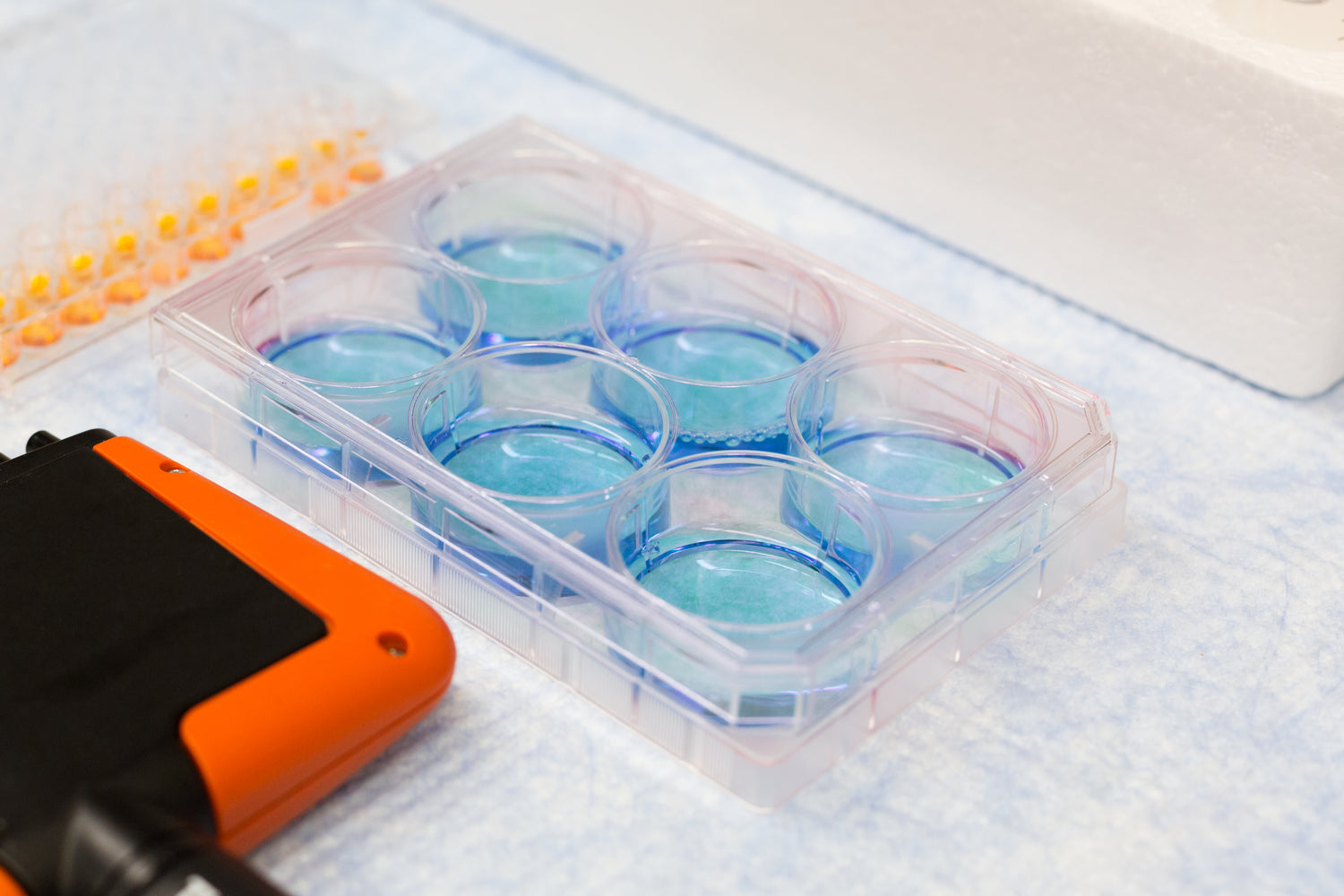
drug science reagent testing information
Any type of recreational drug use carries a degree of risk, both long-term and short-term. This is true for legal recreational...

THC and CBD: What's the Difference?
CBD and THC are two of many cannabinoids present in the cannabis plant. Although they have similar structures, they interact with different receptors.

